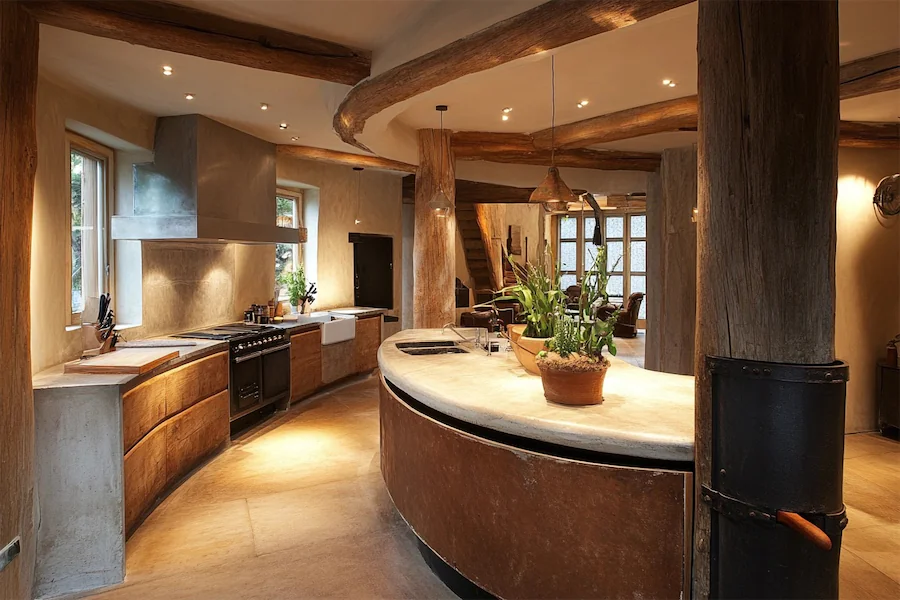An artistic kitchen transcends traditional design by incorporating creative elements that reflect personal style and aesthetic preferences.
Key Features of Artistic Kitchens
- Custom Cabinetry: Bespoke cabinets with unique finishes or artistic details serve as functional art pieces, enhancing the kitchen’s individuality.
- Creative Lighting: Innovative lighting fixtures, such as statement chandeliers or pendant lights in unconventional shapes, add visual interest and set the kitchen’s mood.
- Bold Backsplashes: Eye-catching backsplashes featuring mosaic tiles, vibrant colors, or intricate patterns act as focal points, infusing the space with artistic flair.
Applications of Artistic Design in Kitchens
- Personalized Artwork: Displaying personal art collections or commissioned pieces transforms the kitchen into a gallery, reflecting the homeowner’s taste.
- Unique Materials: Incorporating unconventional materials, such as reclaimed wood, concrete, or metal accents, adds texture and depth, contributing to the kitchen’s artistic appeal.
- Color Schemes: Utilizing bold or unexpected color palettes can evoke specific emotions and set the kitchen apart from standard designs.
Considerations When Designing an Artistic Kitchen
- Functionality: While emphasizing artistic elements, ensure the kitchen remains practical for daily use, with efficient layouts and accessible workspaces.
- Cohesion: Maintain a harmonious balance between artistic features and the overall design to prevent visual clutter.
- Personal Expression: Incorporate elements that genuinely reflect your personality and style, making the space uniquely yours.
Conclusion
An artistic kitchen blends creativity with functionality, resulting in a space that is both inspiring and practical. By thoughtfully integrating custom elements, creative lighting, and personalized touches, you can create a kitchen that serves as a true reflection of your artistic vision.
